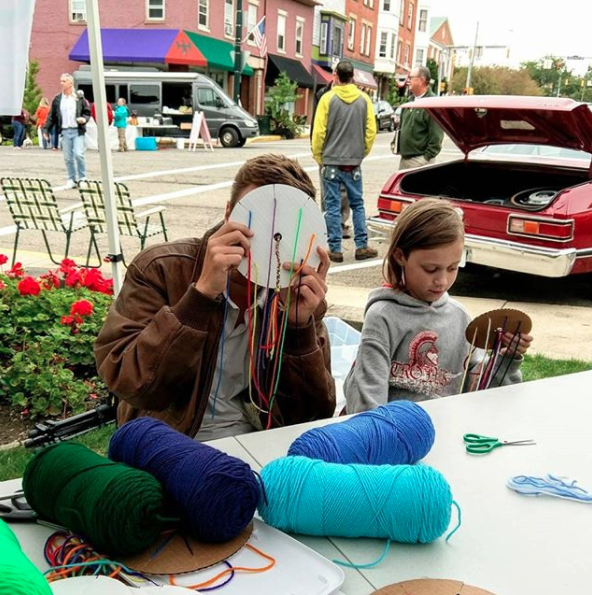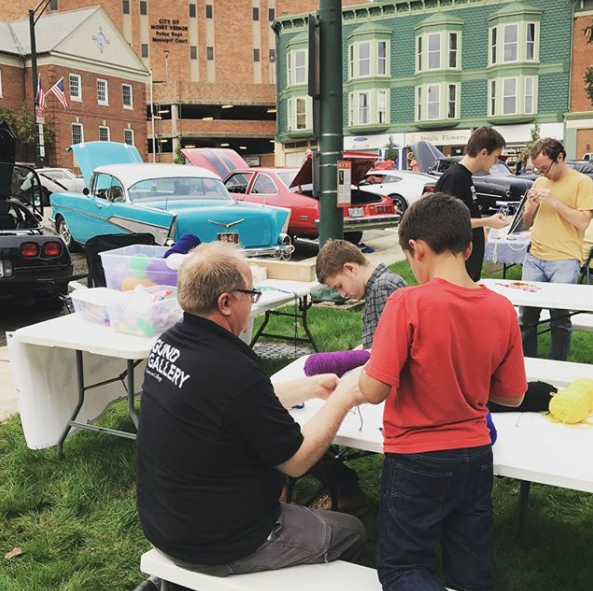Familial First Fridays

Some schools have vibrant college towns without much community life, some are sandwiched on a city block, some are self-contained within a campus. But nestled within the Village of Gambier and neighboring the town of Mount Vernon, Kenyon truly shares in and contributes to a particular tripartite community.
As I’ve written about before, it’s uniquely possible and profoundly important to meaningfully engage off the Hill. Unfortunately, because it’s natural for us to become absorbed in college life, it’s easy to forget that our neighbors in Mount Vernon have their own bustling individual and communal lives from which we could learn much, as I have, about small social networks, local partnerships and faith-centered associations. By engaging in community life, we maximize our opportunities to practice empathy and learn the commonalities that can supersede any cultural and political differences. In this post I want to discuss a specific, special opportunity to do so: First Friday.
There’s much talk today about the decline of the American small town, but civic life seems to thrive in Mount Vernon. It’s truly vibrant on First Fridays, monthly from May through October; these community festivals bring families, couples and friends together on the first Friday of the year’s warmer months to walk around the square, admiring pristine vintage cars and buying food from mom-and-pop vendors. Talking to our neighbors, keeping in touch with our own communities, can sometimes be difficult in this isolating digital age. But through First Fridays, small business and local volunteer groups set up shops and booths, linking the town together.
Kenyon has sought to integrate more with the surrounding area recently through our new Wright Center, an investment in the community that helps us work in concert with local institutions Mount Vernon Nazarene University and Central Ohio Technical College. Home to the Office of Community Partnerships and film department classes, the Wright Center acts as a conduit into town, regularly bringing students into Mount Vernon and community members into contact with Kenyon.
It was at the Wright Center on a First Friday that I tried 3D printing for the first time, while helping at the Gund Gallery’s own community booth. The other Associates and I made crafts with families and their kids, and a few of us took a break and ambled over to buy some local short ribs to cook that night. Not only is that local grocer now our go-to source for dinner ingredients whenever we cook, but we also went back the next month to make a different craft with the kids — and I intend to go to every First Friday hereafter.

As my faithful readers well know, I love Kenyon for affording me the opportunity to participate in community life. In Los Angeles, while I was active in my PTSA and school board, I never got as involved in community life as I wanted. But after my first year, I took what I learned in Ohio back home with me; I quickly got to know my neighbors, turned familiar faces into friends, and even connected with the families nearby when I taught elementary school. On and off the Hill, from my experiences volunteering at the Salvation Army, working at the Gallery, and simply walking around in the community during a First Friday, I saw community in action. From these small-town experiences, I learned to be a better neighbor and citizen.
It’s cliche to attribute to college this transformative effect, but I’ll say it: Kenyon changed me. Speaking at Kenyon in 2005, David Foster Wallace said it best, in his parable of the fish swimming unawares in water: if a liberal arts education teaches you how to think, we should look to learn not so much how to think inside the classroom, but about how to view the people around us. Like the water, community is all around us, and Kenyon helps us to feel it.
